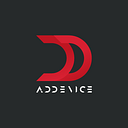Product development is an intricate process. It involves multiple stages and knowing about each is important for the vibrant life of your product. The process is known as the Product Development Life Cycle (PDLC). In this blog post, we will delve into the stages of PDLC. Keep on reading to know more.
The product Development Life Cycle consists of the following key stages:
- New product development
- Introduction
- Growth
- Maturity
- Saturation
- Decline
- Afterlife
Let’s see what each of these 7 stages entails.
New product development
When you want to launch a new product, a lot of processes are involved like market research, idea testing, concept development, and more.
It takes a lot of time to consider each of these elements. For example, just to come up with an idea, you need to study customer feedback, competitors’ markets, and their strong and weak sides. You need to do a lot of internal brainstorming to generate a workable idea.
Once the idea is ready and the concept is formulated in a technical specification document, you can translate the conceptual design into a tangible product prototype or a minimum viable product.
The MVP stage is followed by testing and validation. This stage involves various tests like performance testing, durability testing, user acceptance testing, and more. It’s very important to consider feedback received from this stage in the final product. This can be done by collecting information from the early adopters, through surveys and social media, as well as other marketing strategies. After you collect important information, the stage of analysis starts. It takes careful consideration of all the recommendations and tips that you get. Brainstorming with your business partners is an integral part of this process.
Once this initial stage is complete, you can go on with further steps.
Introduction
When I talk about introducing the product into the market, I skip a lot of hard work that we talked about. But once your product is ready, your marketing team should engage in vigorous product awareness campaigns to get the first customers. All the hard work you did in the previous stage of product development should pay off now. In this stage, the focus is on marketing campaigns and advertising. You can use social media, flyers, and even face-to-face meetings to promote your product. Whatever your case, your task is to get known in the market. Since you did a lot of hard work in the MVP stage, now you should be fully prepared.
Growth
After introducing your product into the market, you will eventually get into the growth stage. It is supposed that you already have a solid base of customers and that the market has accepted you. The marketing efforts do not end with the introduction phase. You need to explore new audiences and new marketing channels. You are expected to get into vigorous competition at this stage. When your competitors notice you in the market, most probably they will try to copy your success. The trick is to evolve at every stage.
Maturity
The maturity stage is more stable. At this stage, you need to make your product different because of market competition. For example, you may need to give discounts, enhance features and at the same time continue promoting your product. When it comes to budget, this stage takes the least money, as most of the work is done in the product development, introduction, and growth stages. The most important thing at this stage is not to stagnate and keep on innovating your product.
Saturation
Like in the maturity phase, you should look for ways to establish a stable place in the market. The question “how does my product differ from similar products in the market” might be a good start for thinking about the saturation stage. For example, you may want to get good testimonials and establish a good base of loyal customers.
Like in any phase, brand awareness continues to be on top of the list. But in this stage, you can also think about pricing policy and customer service.
Once you are established in the market, and have a solid base among your competitors, there may come another phase that you will not like and that is decline. Let’s explore this unpleasant thing you may be afraid of.
Decline
Whether you want it or not, sometimes there is no way to avoid the decline stage. This is perhaps because your product kind of stagnates or the competitors take a hit.
To get out of the decline stage, you should vigorously continue with the new pricing policy and explore new markets. You need to expand your customer base and add new features. Another good strategy for adding new features to your product is to come up with a completely new product with new features. This is how you avoid the decline phase and continue to have a say in the market.
Afterlife
If you could not avoid the decline phase, most probably your product will go out of the market. This may take place gradually. But there are other scenarios. For example, your product may transform into a new solution with enhanced features or you may go through a new product development cycle.
Summing up
Now that you know the main stages of the product development cycle, you can be sure to have no false expectations. You want to avoid your product decline which is a part of the product development cycle. To do that you have to put in the constant effort and have this stage in mind always. If you don’t improve, the cycle will do its job. Be prepared and work on all levels — brand awareness, product improvement, feature enhancement, pricing, and more. Your success will depend on constant innovation.
And one more thing, It does not mean you will go from one stage to another smoothly. Unfortunately, sometimes businesses witness decline shortly after the start. So be prepared and enjoy your ride in the market!
